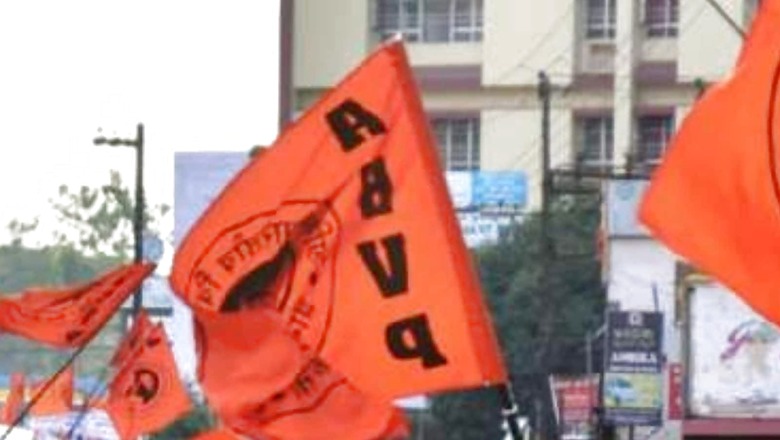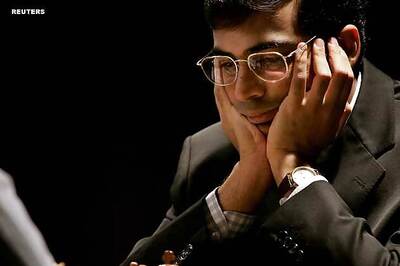
views
The Akhil Bharatiya Vidyarthi Parishad (ABVP), the ideological mentee of the Rashtriya Swayamsevak Sangh (RSS) and the biggest student organisation in Bharat has much more to it than student politics. From rallying students on issues of national integration to contributing toward rural reconstruction, the ABVP cadres have played a stellar role, albeit quietly, in the process of nation-building.
This is the essence of the two-volume biography of this organisation which is going to be released by the RSS Sarkaryavah (general secretary) Dattatreya Hosabale and Sunil Ambekar, the Akhil Bharatiya Prachar Pramukh (all India publicity in-charge) on 15th of April in Delhi. Incidentally, both of them are former organising secretaries of the ABVP and between them they have built up the organisation for almost three decades. The ABVP was set up in 1949. It was Yashwant Rao Kelkar, a professor from Mumbai, who played one of the most significant roles in building up this organisation in its initial years.
Most analysts have often discussed and positioned ABVP as a stepping stone for future leaders to make a transition to the Bharatiya Janata Party (BJP). A significant number of leaders in the BJP as well as those in the current union cabinet and many BJP Chief Ministers and ministers in the state have been members of the ABVP and actively participated in the student politics. But there are many more who moved to non-political fields and worked in a variety of fields ranging from academics to rural reconstruction setting up new milestones.
In fact, the work done by the ABVP as a student organisation for nation-building has often been overshadowed by the role it has played in student politics and the rise of its leaders in national politics in India. This two-volume biography, put together by an RSS Pracharak Manoj Kant, aided by several former and present stalwarts of the organisation breaks several myths and stereotypes about ABVP.
It is, in fact, the most authentic account of the organisation and it took almost three decades to put these two volumes together.
Summing up the diversified roles played by the ABVP cadres, Hosabale wrote in the introduction of both these volumes titled ‘Dhyeya Yatra’ (A purposeful Journey; published in Hindi by Prabhat Prakashan). The ABVP played an important role in terms of integrating north-eastern students with rest of India through cultural exchange programmes which started way back in the 1960s. In Kashmir valley, when Hindus were forced to move out, it ran a nationwide campaign to create awareness about the need to abrogate Article 370. The organisation started a massive campaign against illegal immigration in Assam from Bangladesh in the 1980s. On October 2, 1983, the ABVP organized one of the biggest ‘Satyagrah’ in the recent history of Assam to highlight this issue which became a turning point in this movement.
In 1973-74, the ‘Nav-nirman movement’ in Gujarat was powered by the ABVP. The resonance of the same found reverberations in Bihar also. The organisation convinced freedom fighter Jayaprakash to lead this movement which ultimately resulted in a massive campaign against the authoritarian and corrupt regime of the then Congress government led by Indira Gandhi who imposed an emergency in India. In fact, ABVP was the only student organisation that was leading from the front against emergency and thousands of its cadres including its top leadership were imprisoned by the Indira Gandhi government.
In Andhra Pradesh and Telangana, many cadres of ABVP were brutally killed for running a campaign against the Maoist movements whose aim was to overthrow the Indian democracy through terrorist activities. Similarly, many ABVP cadres had to bear the brunt of communist violence on Kerala’s university campuses.
To stop the caste wars in Bihar, the ABVP carried out a ‘Sankalp Yatra’. During the Mandal agitation in the early 1990s, it ensured that the students shouldn’t get divided on the issue of reservations and it also celebrated the birth centenary of freedom fighter Vinayak Damodar Savarkar highlighting the role he played in ending caste discrimination and bringing social cohesion in the Bhartiya society.
This two-volume biography gives an interesting insight into how ABVP has worked among women. In 1961, Sulabha Devdhar was included as the first women member of the ABVP’s national executive, its top decision-making body. Over the next few years, several women students were given charge of organisational responsibilities, especially in the ABVP state units of Uttar Pradesh, Madhya Pradesh, Karnataka and West Bengal. During the 1980s, the ABVP made a massive outreach amongst women students in Odisha, Delhi, Rajasthan, West Bengal, Uttar Pradesh and Himachal Pradesh.
The first full-time women worker of ABVP was Anjali Parchure Deshpande in 1967. Several women activists became full-time workers of ABVP after that leaving promising careers to work for the organisation dedicating their lives. One of the most prominent amongst them is Geeta Gunde, who left a top corporate position in an MNC, to become a full-time ABVP worker in 1984. She dedicated her life to the organization and donned important roles such as All India head of the women students wing, and national vice-president amongst others. She still remains a full-timer.
When the nation was celebrating the 150th birth anniversary of Bhagini Nivedita, 85 women students opted to become full-time workers of the ABVP. At least 35 per cent of the members of ABVP, at present, are women. There are separate annual conferences held for the women members of ABVP and they have taken up campaigns to oppose female feticide, enhance protection of women in the wake of the ‘Nirbhaya’ case and awareness campaigns against beauty pageants which commoditise women. Most importantly, a significant number of these women members are from tribal areas and marginalised sections of society.
Read all the Latest Opinion News and Breaking News here




















Comments
0 comment